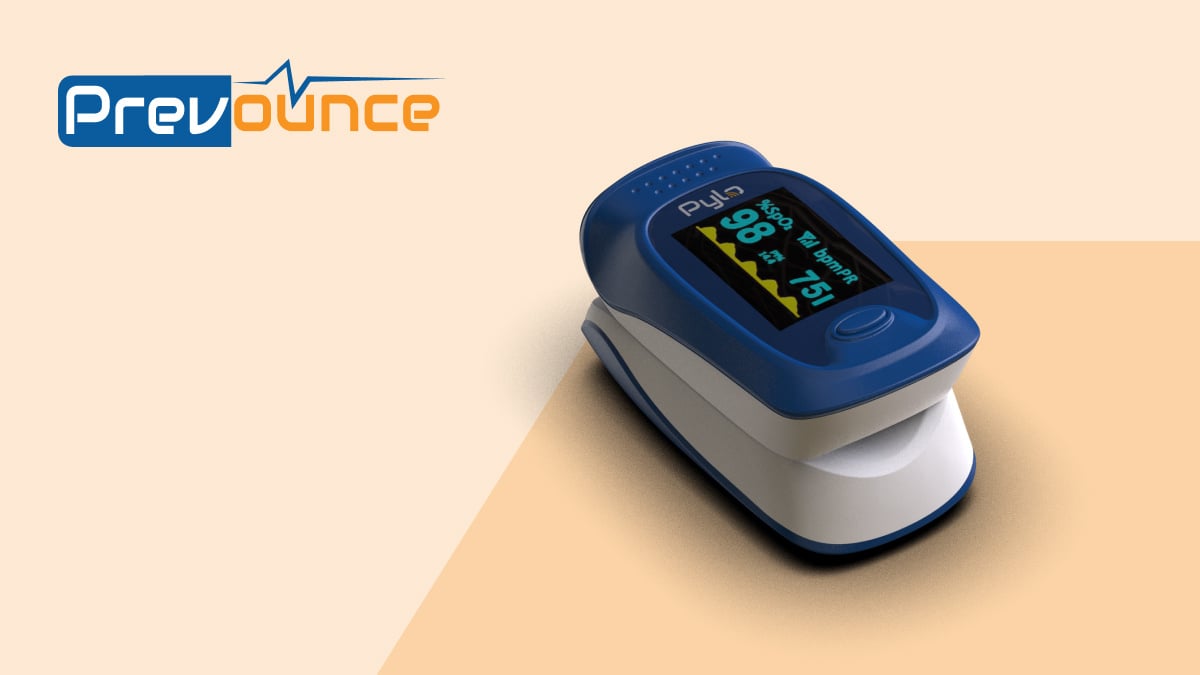Prevounce recently announced the launch of its latest addition to the family of Pylo cellular-connected, clinically validated remote patient monitoring (RPM) devices — the Pylo OX1-LTE pulse oximeter. In this Q&A, Prevounce Founder and CEO Daniel Tashnek discusses the new device, including why Prevounce developed it, how it stands out from other RPM pulse oximeters on the market, who the device is for, key features, and how the pulse oximeter complements the other devices in the Pylo family.
Q: Why did Prevounce develop the Pylo OX1-LTE pulse oximeter?
Daniel Tashnek: Prevounce developed the Pylo OX1-LTE to address the need for a cost-effective and user-friendly pulse oximeter for (RPM and care management programs. We have utilized pulse oximetry monitoring in our care management programs for a few years now and have seen firsthand the need for a device with better accuracy and durability as well as a more reliable connection. We set out to design that device about a year ago, and after thorough internal testing, the OX1-LTE is the result.
Q: What type of care management program should incorporate the OX1-LTE?
DT: The OX1-LTE is ideal for care management programs that need easy scalability while not sacrificing accuracy or device quality. The OX1-LTE and all of our other devices really shine in situations where a provider or organization is monitoring hundreds of patients and requires devices with extraordinarily high reliability. If you are monitoring 10 patients, 3% of your devices having connection issues might not be noticeable, but if you are monitoring 1,000 patients, that same 3% rate can be a major headache.
Making sure the OX1-LTE has the same robust connectivity as our other devices was a particular challenge given its smaller form factor, but we have been extremely satisfied with its performance — as are those providers who participated in the beta testing of the pulse oximeter. We are seeing a less than a 0.25% initial connection failure rate, and each of those initial failures were quickly resolved by a patient moving to a different area of their house.
Other aspects of our commitment to scalability are not as apparent but can be equally important. As one example, the packaging of our main competitor's device is half an inch too wide to be shipped as a “pack” instead of a “box.” We designed the packaging of the OX1-LTE with a higher grade of cardboard so that we could use a thinner box while still fully protecting the device during shipping. The end result of this slightly neurotic attention to detail is that you can ship our device directly to a patient via 2-day express for $2 cheaper than you can ship the thicker box via 5-day ground economy. In our experience, little things like this add up quickly to significantly reducing barriers to scaling a program and improving financial performance.
Q: What patient is the OX1-LTE for?
DT: The OX1-LTE is ideal for patients managing chronic respiratory conditions like chronic obstructive pulmonary disease (COPD) and asthma as well as those patients undergoing treatments that require consistent heart rate monitoring, such as for arrythmias and heart failure.
In addition to respiratory care, we expect other monitoring modalities to start gaining traction. As a personal anecdote, a close member of my family has been going through chemotherapy and having issues with chemo-induced anemia. Originally, this family member would not know that they were becoming anemic until major fatigue and other symptoms would start to occur. At this point, they would tell their doctor, get a complete blood count (CBC), and then receive an infusion and feel better for a while. When the OX1-LTE came out, I gave them one and told them to take their pulse oximeter reading three times a day.
This monitoring helped my family member in two ways. First, their resting heart rate climbed up well before the other symptoms of anemia began. That told us to get them a CBC and set up for an infusion without waiting for the fatigue — and associated increased fall risk and other health risks — to set in. The OX1-LTE also provided more information when they were experiencing anemia because readings would indicate whether anemia was affecting their blood oxygen levels, which might mean that getting them to the hospital becomes an urgent matter.
This family member was already using a pulse oximeter prior to receiving the OX1-LTE, but it is difficult for a patient undergoing something as harrowing as chemotherapy to track every reading manually and correlate it over time with activity. The OX1-LTE allowed the Prevounce team to do that work for them as long as they just put the device on their finger a few times a day.
Q: What are the OX1-LTE's other key features?
DT: Besides those I've noted above, I would call attention to three additional features: multi-carrier roaming with a 2G fallback; high accuracy and perfusion detection; and enhanced durability and device longevity.
Q: How does the OX1-LTE complement the other Pylo devices?
DT: The OX1-LTE integrates seamlessly with the other Pylo devices to make it easier to create a comprehensive RPM system. You can order any of the devices individually or as a multi-device kit using our easy-to-use API or Pylo Management Portal. The same branding and customization can be done on the OX1-LTE as our other devices.
Learn more about the OX1-LTE by downloading the Pylo OX1-LTE brochure.

